The Marketer
While every writer knows that marketing must play some part in a book’s creation, few have the professional expertise and natural talent that Jan Karon has brought to her books from the start. Karon got her first, entry-level job in the advertising industry around 1955, when she was an eighteen-year-old mother with a three-year old child. Over the next three decades, she moved further and further up in the field, receiving promotions and awards for work that showcased her verbal and visual talent and natural wit.
Her success eventually gave her the financial resources to quit advertising and become an author. As the archive shows, she used the skills she had built in her first career to achieve spectacular success in her second. As an unknown, older, first-time novelist, whose first book did not follow any of the conventions of successful popular novels of the time, finding an audience was no small task. Yet she knew that her passion — to create a wholesome, spiritually healing literature — was also a gaping hole in the book market. Shown here are artifacts that reveal how Karon, like all writers, pushed hard to extend the reach of her message to a larger and larger audience.
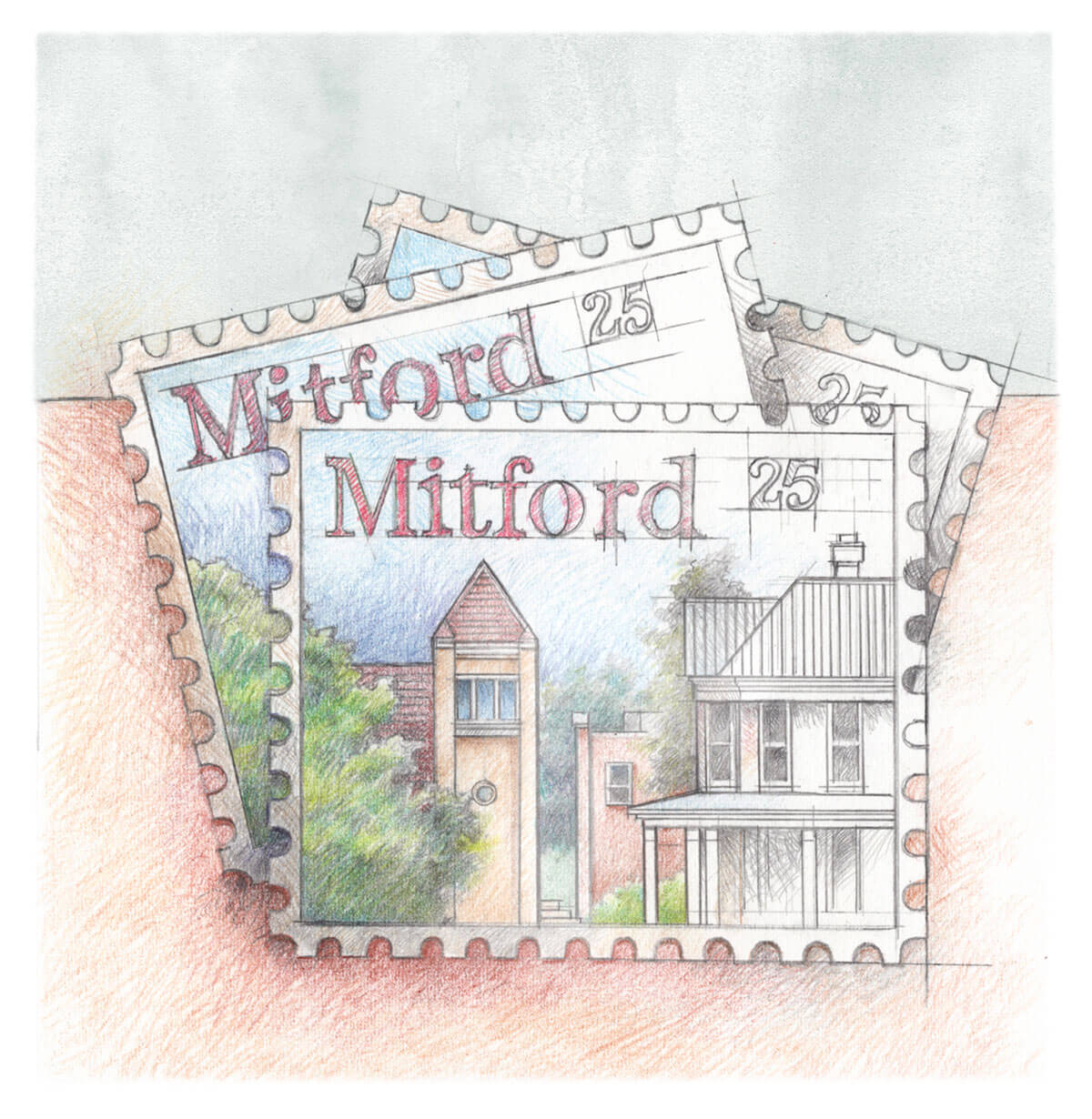
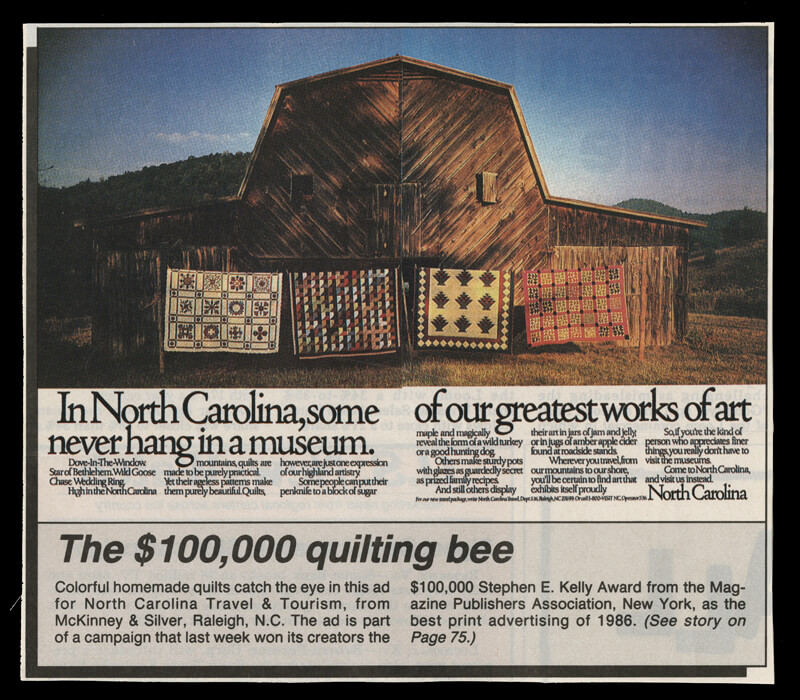
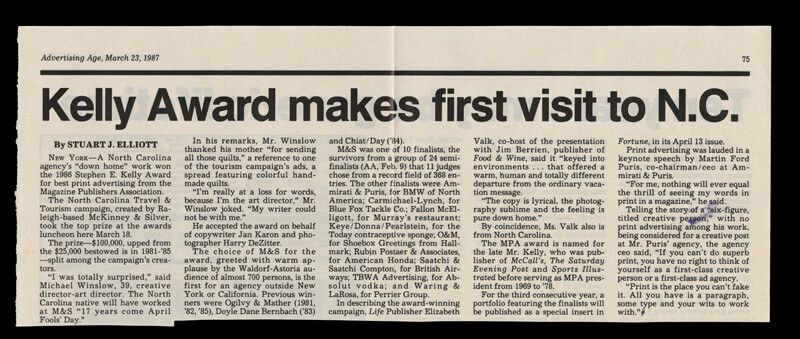
An unidentified newspaper clipping featuring the award-winning “North Carolina Travel & Tourism” campaign and a clipping of an article about the award from Advertising Age, 23 March 1987 (Box 89.17-18)
From Career to Calling
At the height of Karon’s advertising career, she worked at McKinney and Silver in Raleigh, North Carolina, where she was eventually promoted to Creative Vice President. While advertising provided opportunities for Karon to flex some creative muscle, she held on to her lifelong dream of becoming an author. Finally, in 1987, her receipt of the Steven E. Kelly Award for a North Carolina tourism campaign gave her the financial boost she needed to quit her job, move to the mountains, and write full time.
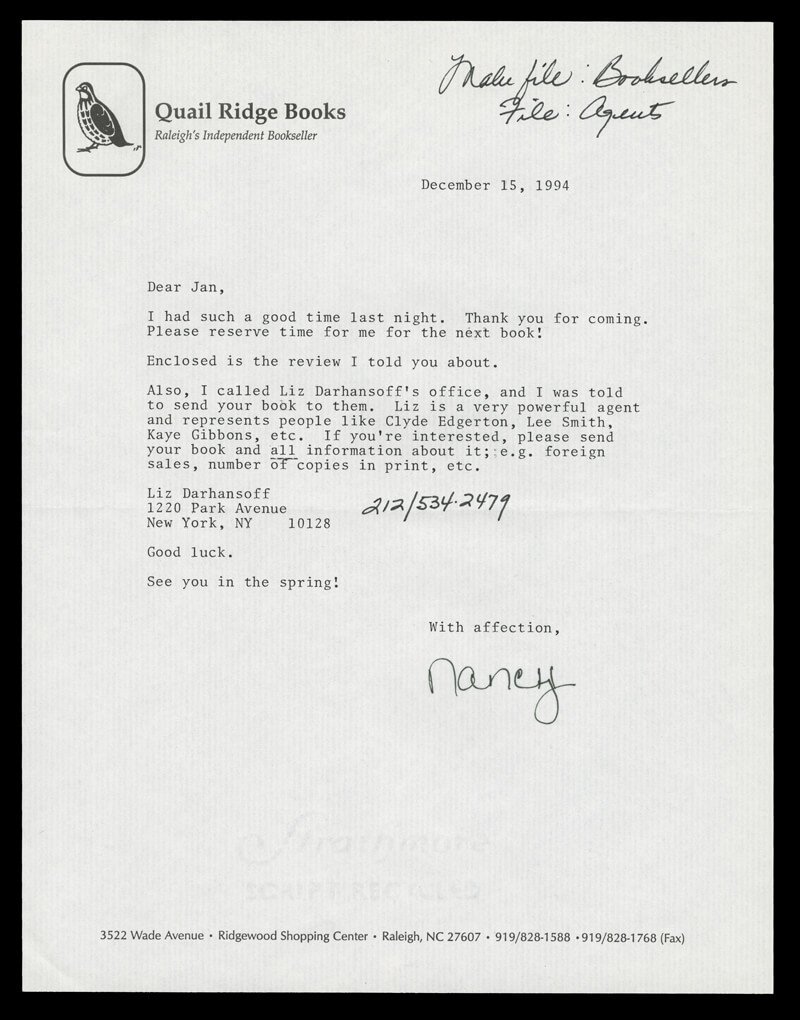
Above: A letter from Nancy Olsen to Jan Karon, 15 December 1994 (Box 49).
Building a Network
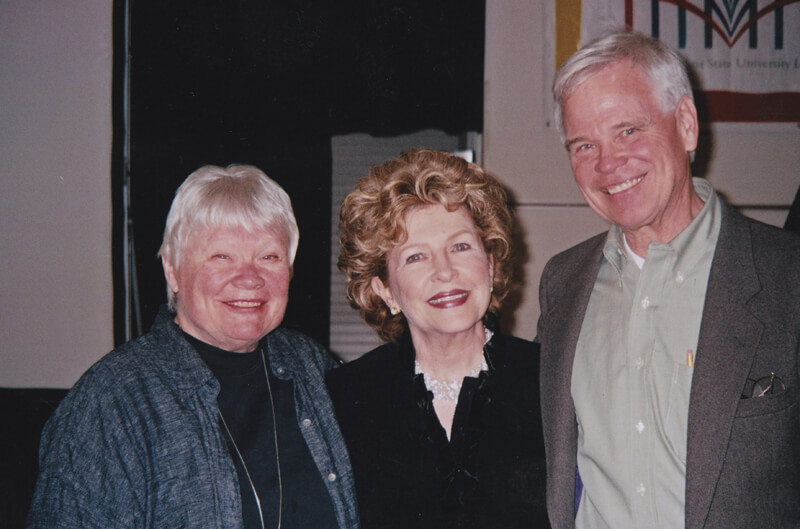
An undated photograph of Nancy Olsen (left), Jan Karon, and unknown man (Box 86.13)
The letter shown here marks a transformative moment in the history of Mitford. After being rejected by numerous mainstream publishers, Karon’s first novel, “At Home in Mitford,” had been acquired by Lion, a publisher of Christian-oriented books. Believing strongly in her work’s potential for widespread appeal, Karon almost immediately began to seek a new publisher. Her tenacity was rewarded when a serendipitous chain of events put her in contact with Liz Darhansoff, an influential New York literary agent. Mary Richardson, Karon’s neighbor in Raleigh, had passed along a copy of “At Home in Mitford” to Nancy Olson, the legendary owner of the iconic local bookshop, Quail Ridge Books.
Enamored by the book, Olson introduced Karon to Darhansoff, who then put Karon in contact with Carolyn Carlson at Penguin Books. Thanks to Olson’s introduction, Karon was able to re-negotiate her contract with Lion and publish her third Mitford novel, “These High Green Hills”, with both Viking Penguin and Lion. Following that publication, Karon left Lion and signed exclusively to Viking Penguin, one of the most prestigious of literary imprints.
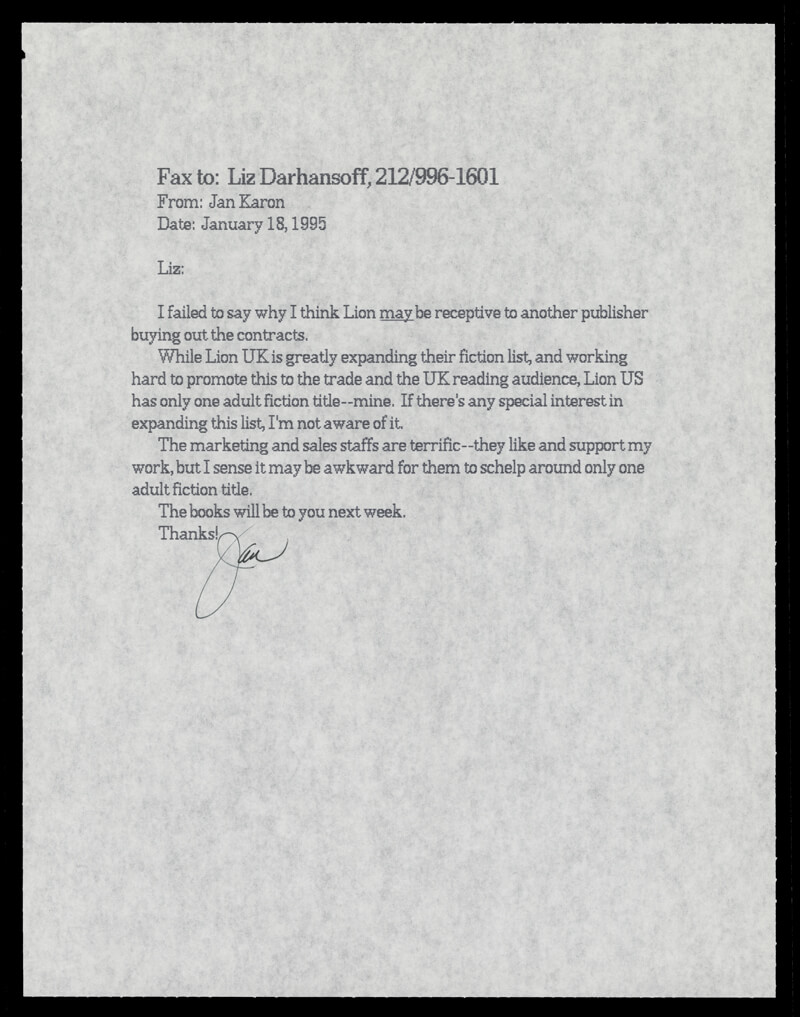
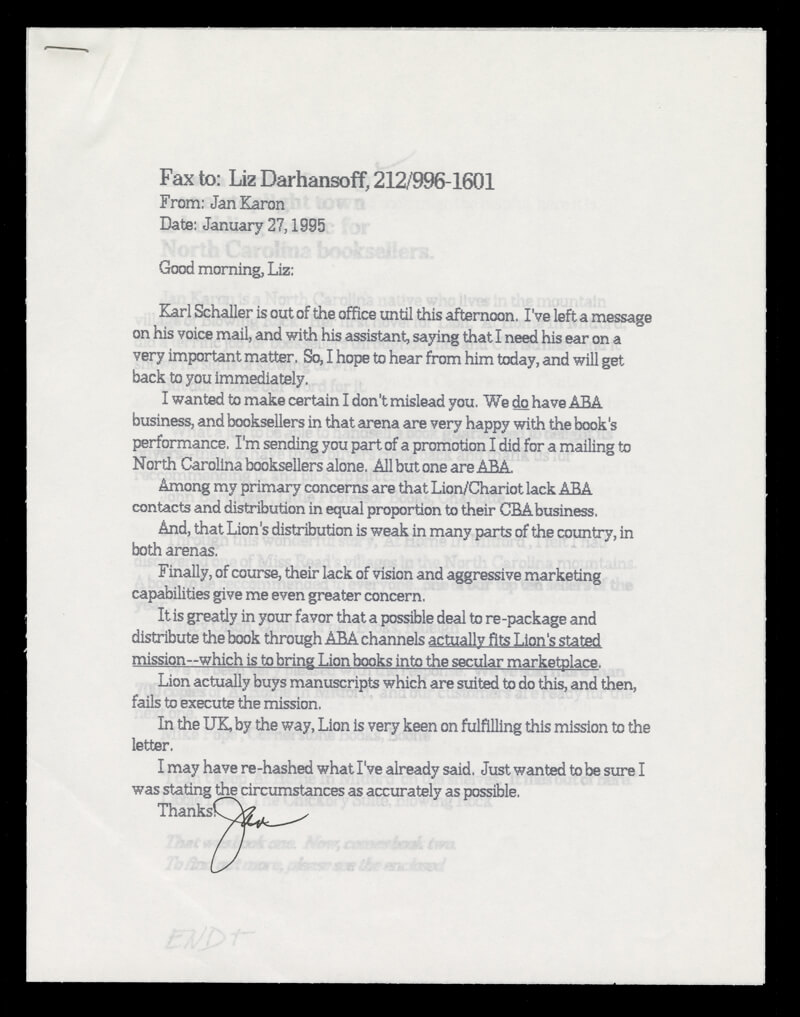
Faxes from Jan Karon to Liz Darhansoff, 18 January 1995 and 27 January 1995 (Box 49)
Behind the Scenes
“At Home in Mitford” was published in 1994, the same year that Amazon.com launched. This was a time when brick and mortar bookshops served localized, specific communities, and the biggest conversation in bookselling was the destruction of niche businesses by the relatively monolithic cultures of Barnes and Noble and Borders Books. Karon knew how essential it was to not just get Mitford into mainstream bookshops, but to situate it well in anticipation of an uncertain future.
Karon’s correspondence files reveal the dense knot of issues she faced in having her work published by Lion, a specialty press that wanted to reach beyond its core Christian vendors and into the secular marketplace, but was struggling to do so.
Broadening the Mitford Brand
Once Karon was established with Viking/Penguin, her creative marketing juices flowed in many directions, and this item is just one example of how Karon communicated with her colleagues, both agent and publisher, about her vision for making Mitford a success. This proposal represents Karon’s first project beyond the straight chronological series of Mitford novels: a novella that she envisions succeeding in the gift book market. Many more such projects were to follow in the years to come, and continued to achieve large audiences.
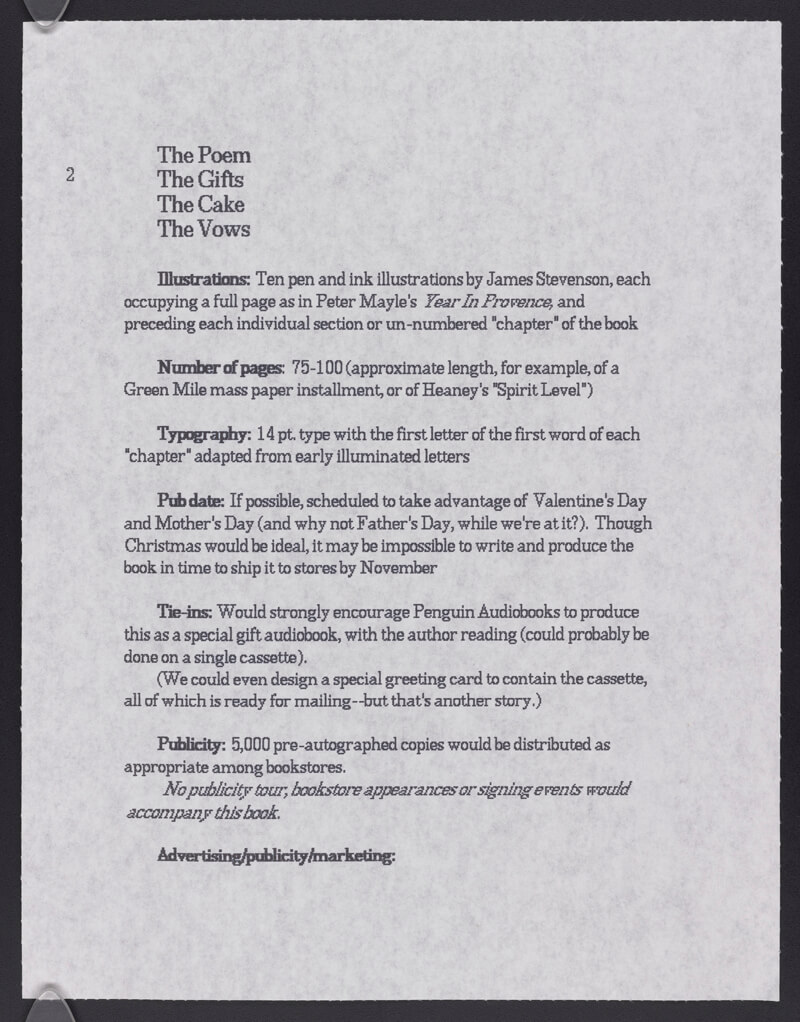
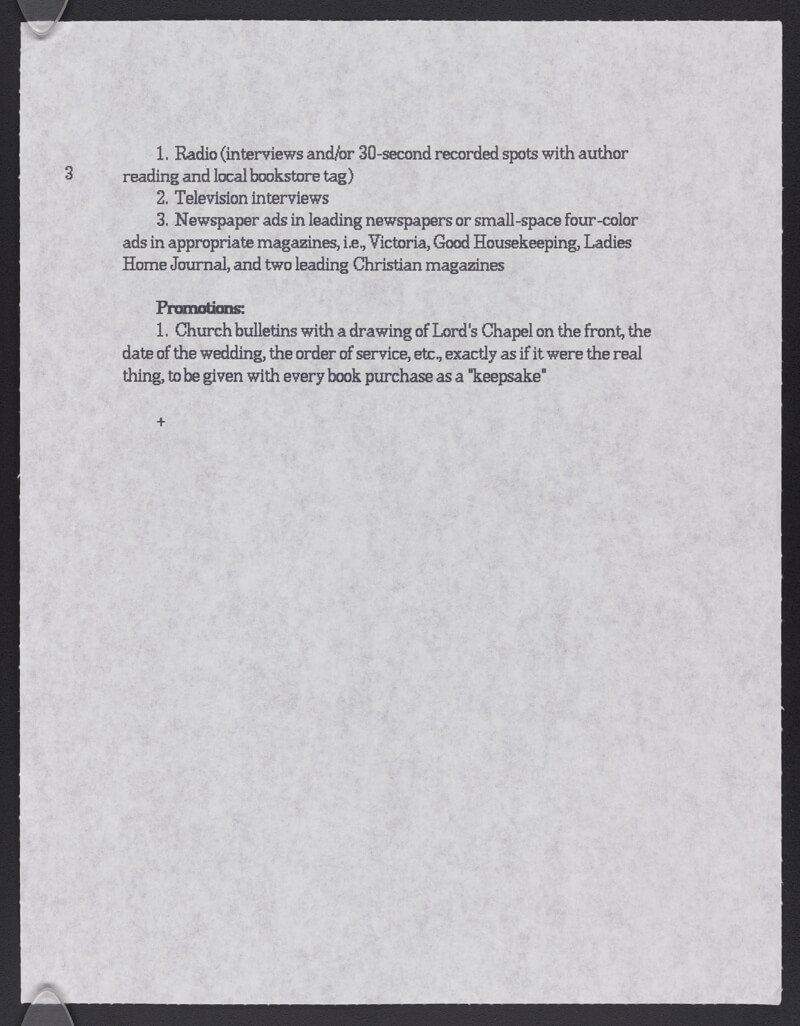
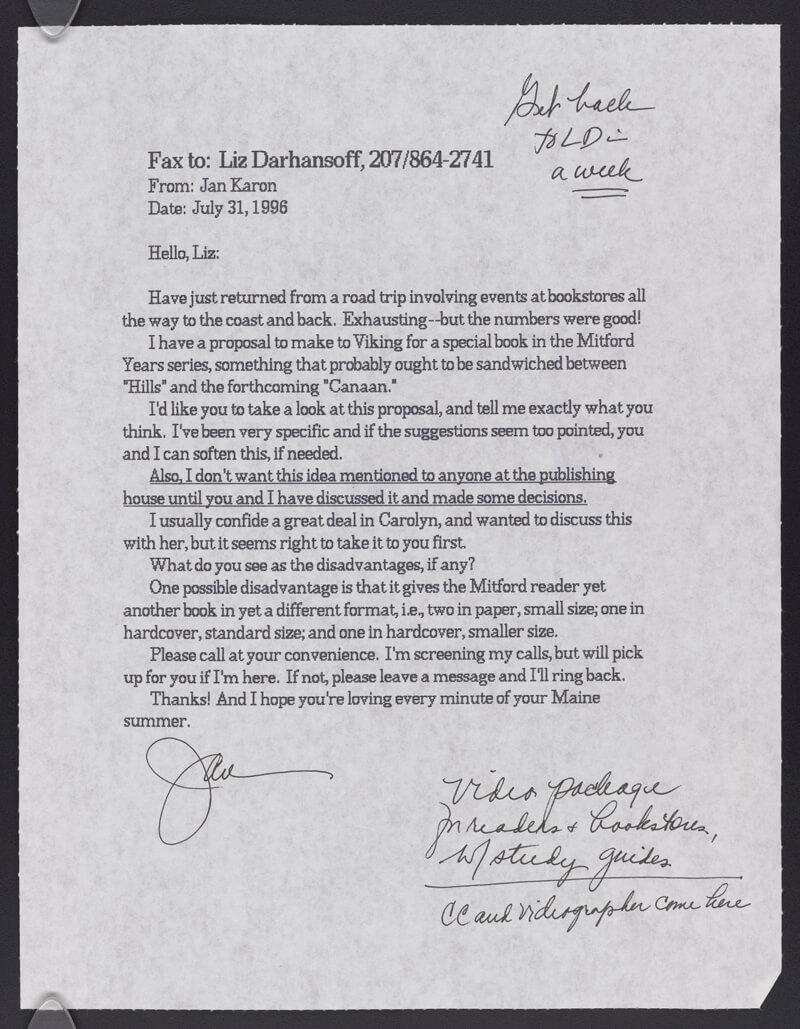
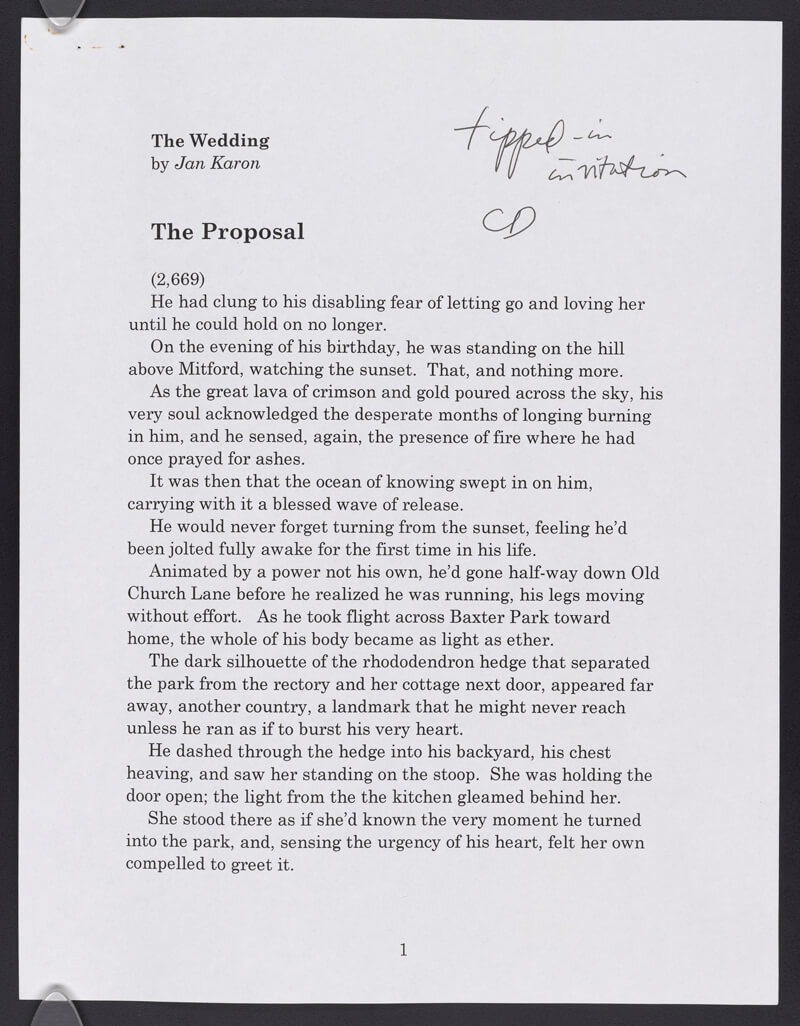
Faxed cover letter, book proposal, and opening of a chapter for the book published in 2001 as “A Common Life: The Wedding Story”, sent from Jan Karon to Liz Darhansoff, 21 July 1996 (Box 49)
Booksellers as Partners
Karon worked hard to get Mitford off the ground in the face of LIon’s limited publicity capacity: she cold-called booksellers, established relationships with bookstore owners, conceived of and realized advertisements for her books, and organized numerous book readings and signings. These efforts paid off: the books were soon carried by a variety of bookshops, both Christian and general trade, across the country. Those booksellers became dedicated emissaries for Mitford, hand-selling the first and second books, and helping Karon turn Mitford into the phenomenon she believed it could be.
This fax provides a glimpse into Karon’s warm relationship with small bookshops far from Karon’s home at the time in North Carolina. Booksellers Pati, Kath, Marianne, and Marcia see themselves as “partners with you in ‘sharing’ your books with others.’”
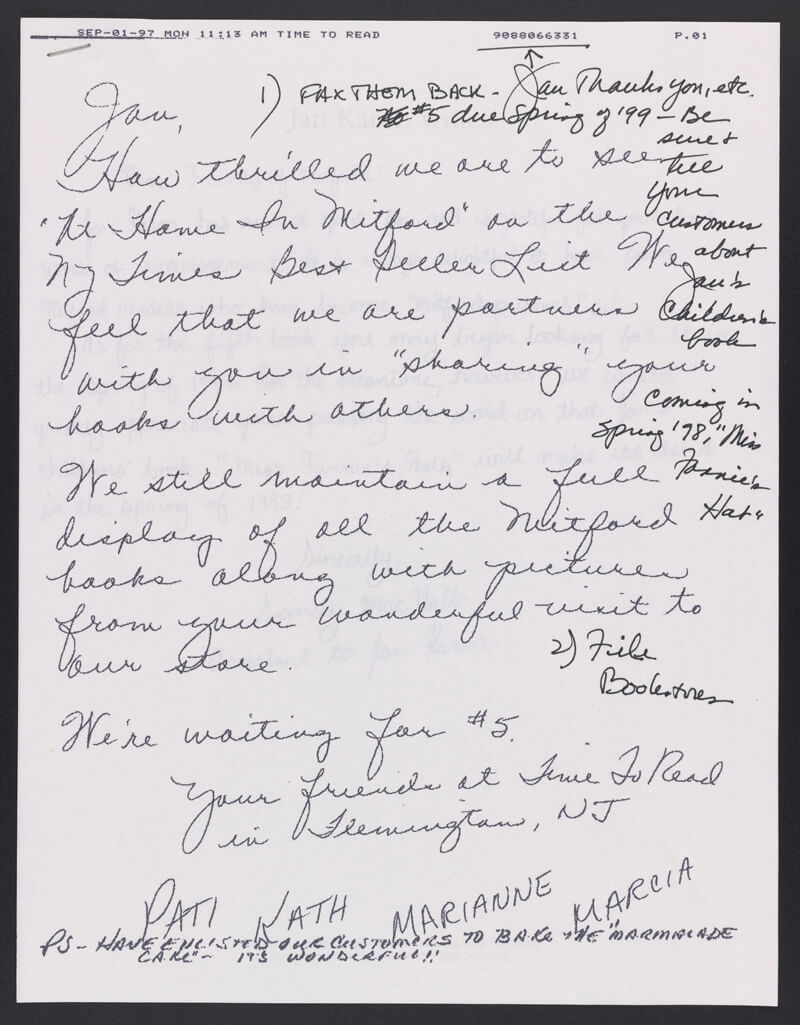
A fax from A Time to Read bookstore to Jan Karon, 1 September 1997,
Gendering Mitford
This brainstorm, in both text and image, reveals Karon’s multifaceted approach to developing Mitford long after it had an established audience. Here, we see her imagining a project that would expand both male and female reader communities: a “published version” of the private journal of the Mitford character Lace. The journal is mentioned in the Mitford novels, and would have provided insight into the popular character of Dooley. Unfortunately, the project was never realized: as Karon puts it, after 2008 the publishing industry became more conservative and only wanted novels.
Were this book to have been published, it would have been the first to feature the face of a Mitford character on its cover: Karon felt that this photograph perfectly captured Dooley’s character.
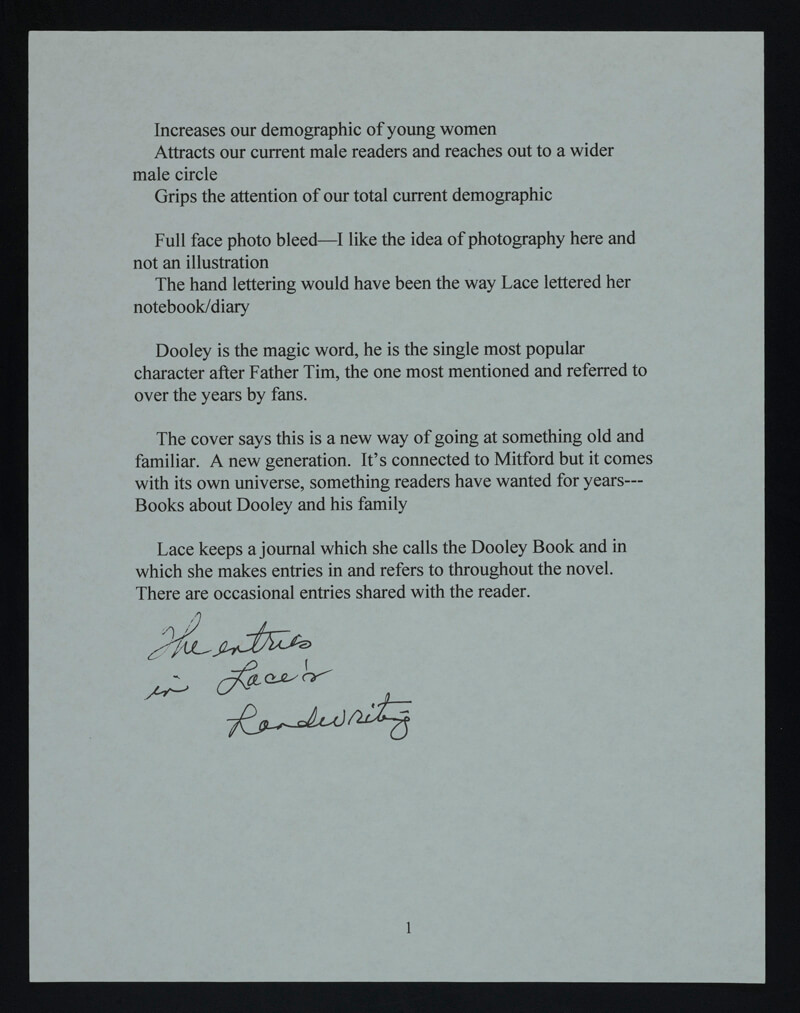
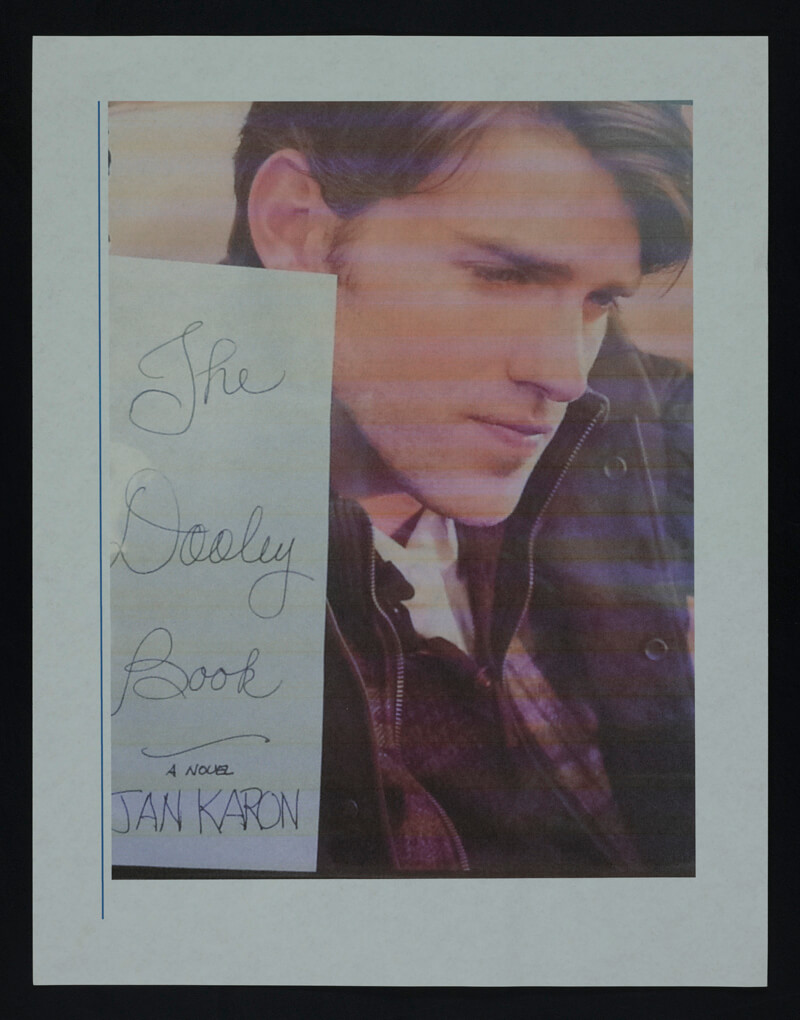
Karon’s early concept work for a book she never wrote, “The Dooley Book,” undated, ca. 2014 (Box 2.2)
Previous Section: The Artist | Next Section: About this Exhibition